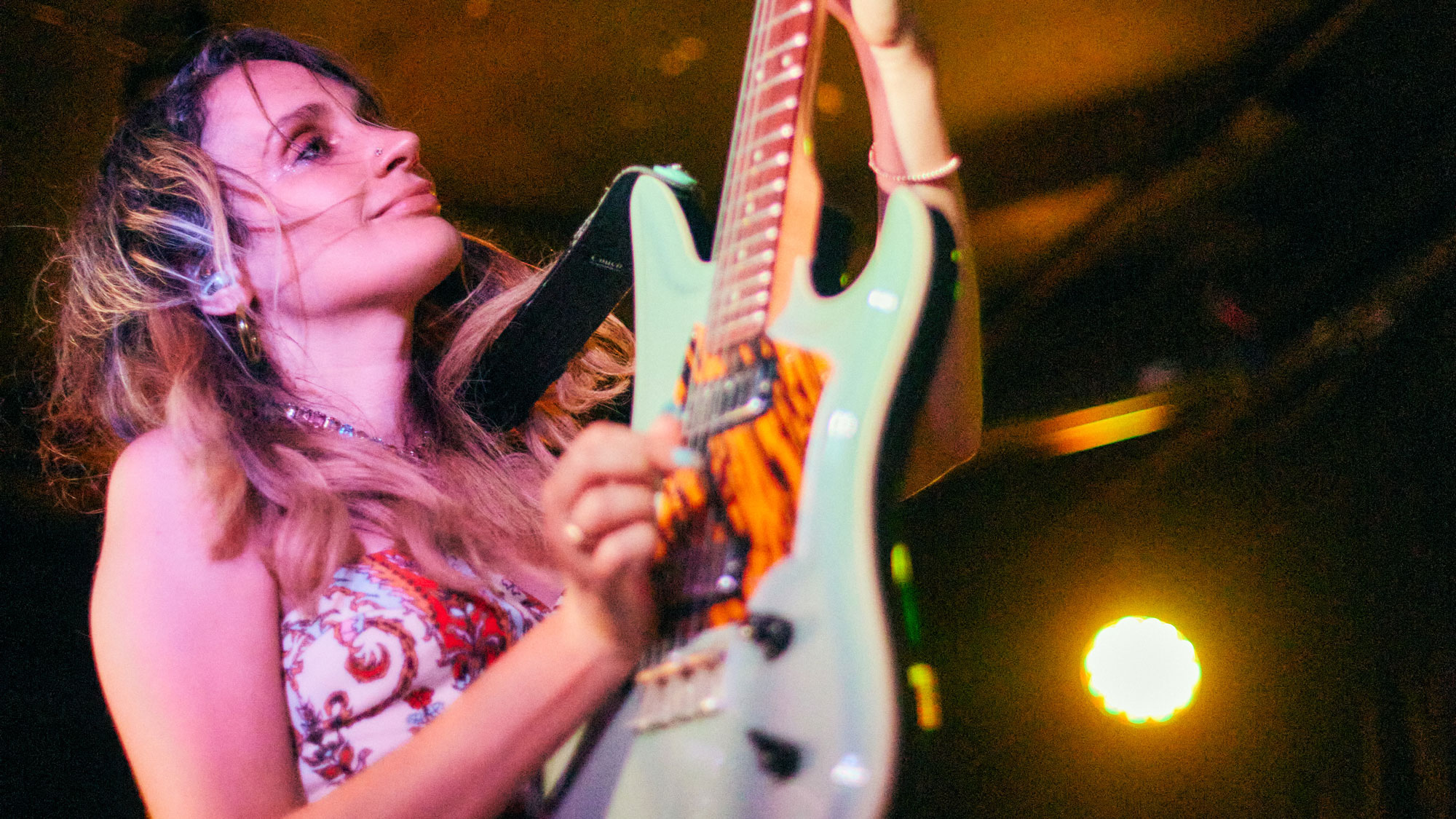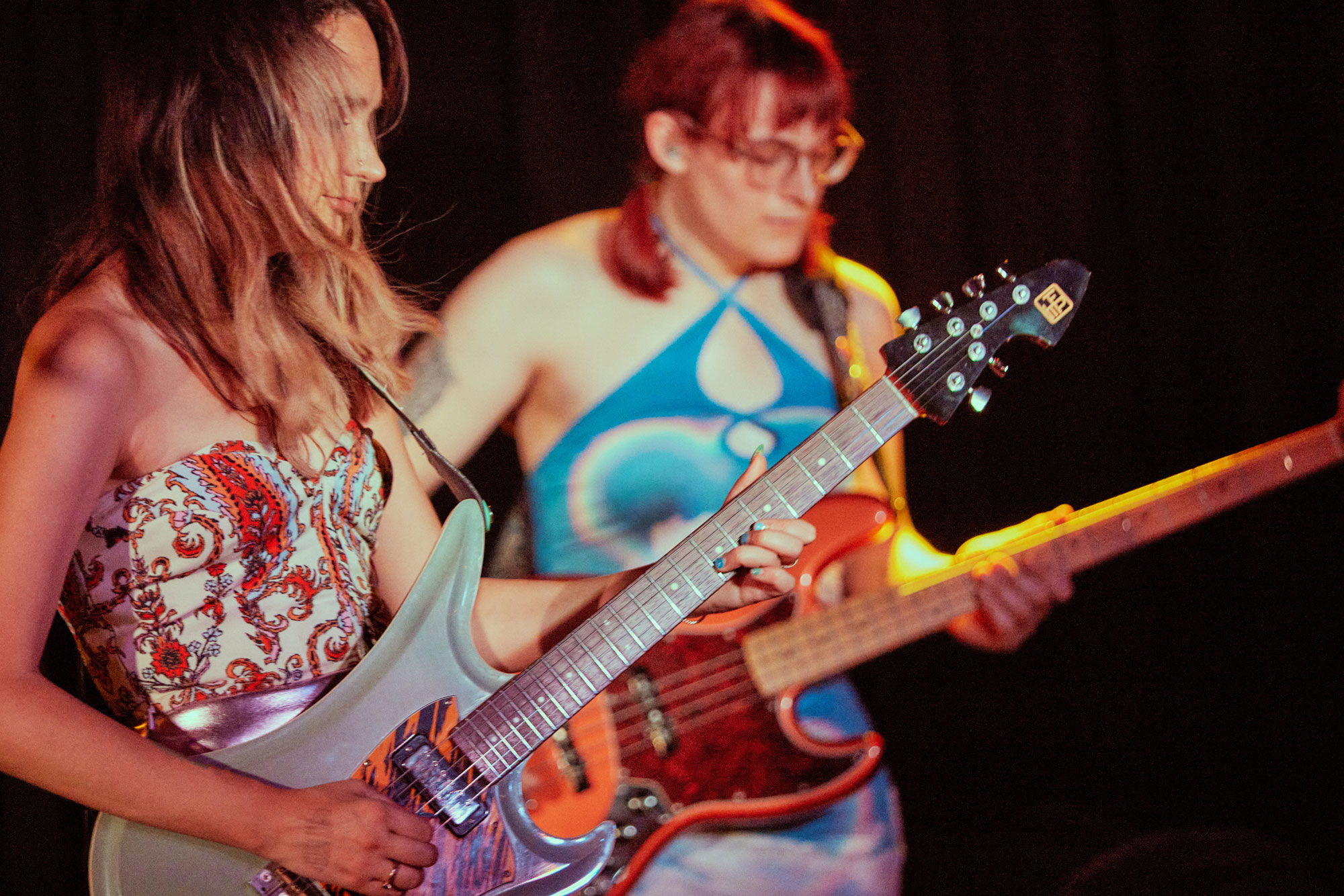“I never understand when someone’s in a studio, using their own stuff. I’m pulling out everything – we used 100 guitars on the previous record”: Sadie Dupuis on making Rolling Stone’s top guitarists list – and getting a guitar in the Rock Hall of Fame
The Sad13 and Speedy Ortiz leader has made some of 21st-century indie-rock’s most essential albums, but she admits her approach to writing often lands her in trouble

Sadie Dupuis has been dropping indie-rock gems with Speedy Ortiz and Sad13 for over a decade. Records such as Major Arcana (2013), Twerp Verse (2018), Slugger (2016) and her most recent, Speedy Ortiz’s Rabbit Rabbit (2023), are servings of raucous guitar heaven.
Last year she was named among Rolling Stone’s 250 greatest guitarists of all time – which came as a surprise. “I was really honored to be included,” she tells Guitar World, “especially alongside a bunch of guitarists who are friends and whose playing I admire so deeply.”
She continues: “Mary Timony is one; I’m touring with her again this summer. And another is Stephen Malkmus, another former tourmate and friend. There’s a lot of people who play surprising things, listen to what a song needs and who have tremendous technical ability – but are not always, you know, hitting the accelerator.”
While reveling in the “thrill” of being on the list, Dupuis notes: “There’s plenty of my favorites who are not there. I take every list with a grain of salt, but it’s meaningful to know that my playing has been interesting or inspiring to anybody.”
You’ve just hopped off tour, so now’s a good time to dig in on what you've been using on the road. Any new discoveries?
“We were in Europe where the already archaic laws that used to be questionably enforced are now apparently very seriously enforced! It was heavily impressed upon us that we had to have exactly the same equipment and serial numbers at every single border checkpoint.
“So there was nothing new and exciting; I was using pretty much the same setup I used in the US this past fall. The big update to my rig is the Joe Parker Guitars custom Spectre.
Get The Pick Newsletter
All the latest guitar news, interviews, lessons, reviews, deals and more, direct to your inbox!
“I used one of his guitars at the Rancho De La Luna studio on a huge chunk of the Rabbit Rabbit album, because we used something like 100 guitars on the previous record. I’ve been using that fairly consistently on the road for the past year or two.”
What do you like about the Spectre?
“First, it sounds great and it’s wonderful to play. But it’s fun seeing people react to it, because aspects of it look like an old Teisco. People are very excited to see that headstock style because it’s an unusual-looking instrument.
“It was cool to get to bring it to Europe and have people asking questions about it. In Poland they asked the same questions they asked in New Jersey!”
When you're not restricted by archaic laws, what sort of gear catches your eye?
“I have a fairly huge ’board – there’s probably 15 pedals on it. I want a variety of drives, a couple of fuzzes, a couple of delays, a couple of reverbs; more broad strokes, then subtle stuff.
“If I’m tracking something at home I gravitate more towards weird-sounding effects. I really like Alexander Pedals, and NativeAudio has a couple that are – I wouldn’t say they’re super out-there, but they have nice reverbs that can give a big variety of sounds.
“And I love Red Panda Lab; they’re kind of an unmistakable warped weirdness generator. Then I have a ton of EarthQuaker stuff; I’d say like 60 percent of my setup at any given time is EarthQuaker. I love how innovative they are.”
Do you have any always-on pedals?
“There’s a few that I’ve grudgingly swapped out recently. I always used an EarthQuaker Dunes Mini Mega Ultimate Overdrive. I switched to their Plumes pedal at some point in the fall, and I really liked it, but it took me a second to get used to it. I’m slow to make changes – that’s my big change for this tour.
“I’ve been using the EarthQuaker Dispatch Master reverb consistently since 2015. I use that when I’m using a backline amp – I like to have a reverb to rely on if I’m not traveling with my own amp.
What is the part contributing? If you’re using the same lyric 12 times, that may have a certain potent effect, but it may also be redundant
What are your top tips for gear shopping?
“Keep the box in case you don’t like it! One way I’ve been able to acquire a bunch of stuff is trying out friends’ things, or meeting with some of the pedal makers that I really like. When I’ve used something in a studio and liked it, I take notes, take a picture, and let the person making it know I liked it.
“It’s nice to make connections with the folks who make the equipment because it’s a different side of music-making and artistry, but we’re all in it for the same reasons. I feel very lucky to get to meet the people who make these crazy sounds, so I can incorporate some of them myself.

“I never understand when someone’s in a studio and just using their own stuff. I feel like that's the perfect opportunity to try out something new and figure out how it can accentuate certain parts of your playing style. So if I’m getting to the studio, we’re pulling out everything!”
What keeps you inspired to write riffs these days?
“The weird thing for me – and this is probably what gets me into trouble, especially when I have to sing – is that I tend to write drums and bass before I do anything else. That forces me to come up with a lot of melodic passages that might not be the first or most obvious choice.
“It’s exciting to not just start with a chord progression on guitar. You can let the guitar have its own melody if you’re not coming from a place of working through the chord passages. You can figure out what it wants to say if its role is more than just to delineate the progressions underneath it.”
How do you view solos?
“I think it’s the same on any instrument – what is the part trying to say? What is it contributing to the song? It could be the same as a lyric: if you’re using the same lyric 12 times, that may have a certain potent effect, but it may also be redundant.
“If you’re playing a super-fast solo that shows your technical skills, but it’s not providing some emotional release in what it’s saying, then maybe it doesn’t belong there. Or, if it’s a super-fast technical solo coming out of nowhere and shakes things up, it can provide an interesting palette choice.
“It’s just about listening to what the song wants and what will be fun, interesting, emotive or surprising. I don’t think you can make a blanket statement about all guitar solos. Having a versatility – different kinds of solos – makes it fun and surprising to compose.”
I’ve had so many friends lose really irreplaceable instruments. So I’m pretty happy that that guitar is behind glass right now
Have you started to think about new music yet?
“I have some random commissions, like scoring and recording projects, so I have nothing of my own right now. But I’m slowly getting back into the home studio, pulling out the pedals and working on things.”
What else is on tap in the immediate future?
“I’m really hoping I get a chance to go see the Revolutionary Women in Music exhibit at the Rock and Roll Hall of Fame. They’re displaying my Moniker Anastasia custom guitar.

“They were an Austin-based guitar maker that stopped operations a few years ago, but they made me this amazing shell pink semi-hollow guitar. It’s got a crescent moon cut out and “Sad13” painted on the headstock by my friend.
“It’s one of my favorite instruments – but I’ve been way too anxious to take it on tour the past few years because I’ve had so many friends lose really irreplaceable instruments. So I’m pretty happy that it’s behind glass right now. I hope I get to go check it out while it’s at the museum.”
- Rabbit Rabbit is out now via Wax Nine.
Andrew Daly is an iced-coffee-addicted, oddball Telecaster-playing, alfredo pasta-loving journalist from Long Island, NY, who, in addition to being a contributing writer for Guitar World, scribes for Bass Player, Guitar Player, Guitarist, and MusicRadar. Andrew has interviewed favorites like Ace Frehley, Johnny Marr, Vito Bratta, Bruce Kulick, Joe Perry, Brad Whitford, Tom Morello, Rich Robinson, and Paul Stanley, while his all-time favorite (rhythm player), Keith Richards, continues to elude him.
Guitar World Discussion: Who is the most underrated guitar player of all time?
Ozzy Osbourne’s solo band has long been a proving ground for metal’s most outstanding players. From Randy Rhoads to Zakk Wylde, via Brad Gillis and Gus G, here are all the players – and nearly players – in the Osbourne saga










